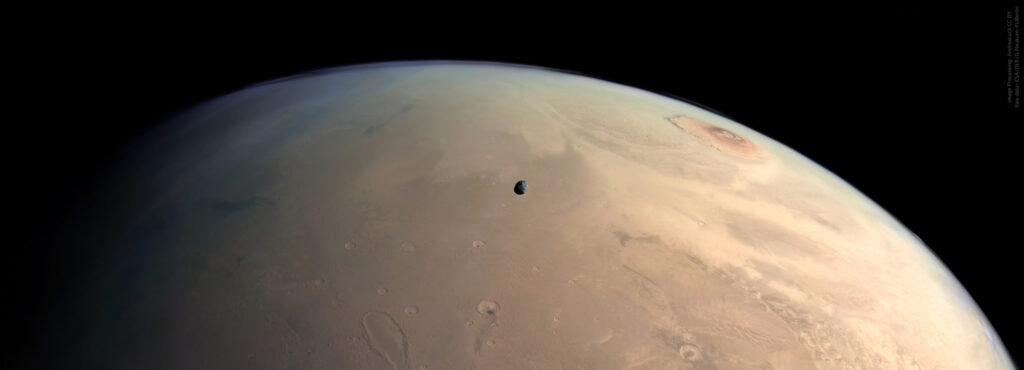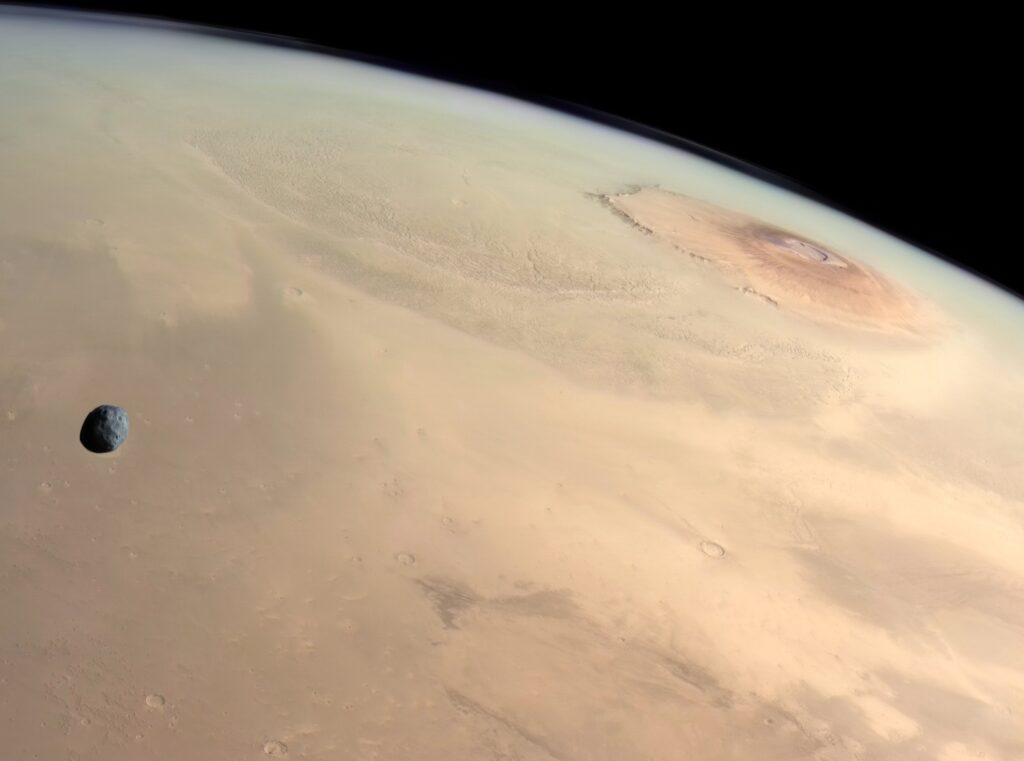British astro-enthusiast Andrea Luck has published a spectacular image of Mars. It shows Phobos above the largest volcano in the Solar System.

The image was created from photos taken by the Mars Express mission on July 13, 2024. The resolution of the original version is 140 megapixels. The detail of the image is so great that in addition to the craters on the Martian surface, we can also see the craters of Phobos itself.
Mars Express can make such images due to the fact that in the apocenter of its orbit, it is removed from Mars at a distance of 10 thousand km, while the orbit of Phobos passes at a distance of only 6 thousand km from the Martian surface. For comparison, the average distance between the Earth and the Moon is 384 thousand kilometers. Thus, Phobos is the closest natural moon in the Solar System to the planet and regularly “photobombs” Mars Express images.
Such proximity has a price. Phobos is destined for death. Under the influence of tidal forces, the moon is gradually approaching the Red Planet. Martian gravity is already having a noticeable effect on it – interplanetary vehicles have photographed a series of furrows on Phobos’ surface. When the 22-kilometer moon passes the Roche limit, it will simply be torn apart. According to various estimates, this will happen in 30 to 50 million years.

In addition to Phobos, another famous Martian landmark can be seen on the Mars Express image. We are talking about the famous Olympus Mons. It is the largest volcano in the Solar System. It rises 26 km above the surrounding surface, with a base diameter of 600 km. This is comparable to the distance from Kyiv to Warsaw. Getting to the top of Olympus, the traveler will actually find himself in the conditions of outer space. Atmospheric pressure at this altitude is almost identical to a technical vacuum.
Earlier we told you that Olympus Mons could have been a volcanic island in the ocean of Mars in the distant past.


